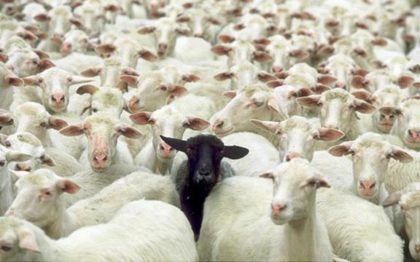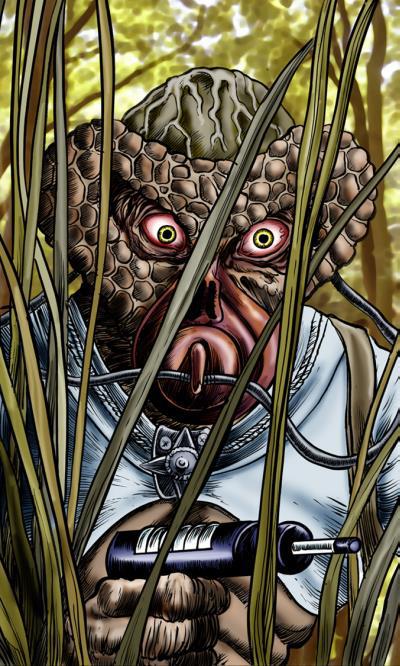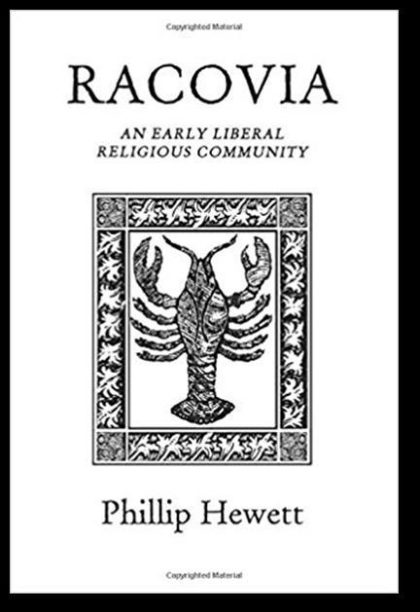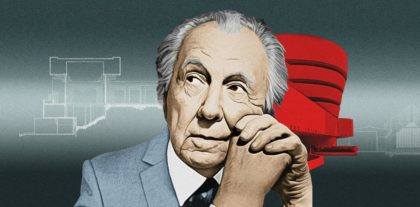Hope Reborn
Unitarian Universalist Congregation of Columbia
Martin Luther King, Jr. Day
January 14, 2018
Rev. Jeff Liebmann
Opening Words
By Martin Luther King, Jr.
The hope of a secure and livable world lies with disciplined nonconformists, who are dedicated to  justice, peace, and brotherhood. The trailblazers in human, academic, scientific, and religious freedom have always been nonconformists. In any cause that concerns the progress of mankind, put your faith in the nonconformist!
justice, peace, and brotherhood. The trailblazers in human, academic, scientific, and religious freedom have always been nonconformists. In any cause that concerns the progress of mankind, put your faith in the nonconformist!
Time for All Ages
Who Says?
The Opening Words I read were spoken by the Rev. Dr. Martin Luther King, Jr. He was talking about nonconformists? Can any of you tell me what a nonconformist is? A nonconformist is a person who stands up for what they believe no matter what other people think. To “conform” is to go along with others even when we might not agree with them. So, a nonconformist is someone who chooses not to conform.
Today, we are going to practice being nonconformists. How many of you have ever played the game “Simon Says?” Well, today, we are going to play a different game, called “Who Says?” In this game, when I say “Simon says do something,” you don’t do what Simon says. Instead, you shout, “Who says?” But if I just say to do something, then you go ahead and do it.
Make any kind of animal sound.
Simon says, “Stop.”
Make a funny face.
Make a scary face.
Simon says, “Stop making faces.”
Think about your favorite food. Now shout out what it is.
Think about your favorite color. Now shout out what it is.
Think about your favorite book. Simon says, “Shout out the name of the book.”
Sometimes, people ask you to do things. And if you respect that person and agree with them, then it is ok to do what they ask. But if someone asks you to do something or think a certain way, and you don’t agree, then you have every right to disagree and to be a nonconformist.
Reflection Reading
By Martin Luther King, Jr.
Nonconformity per se contains no saving value and may represent in some circumstances little more than a form of exhibitionism…Nonconformity is creative when controlled and directed by a transformed life and is constructive when it embraces a new mental outlook…This experience…is essential if we are to be transformed nonconformists and freed from the cold hardheartedness and self-righteousness so often characteristic of nonconformity…
 Only through an inner spiritual transformation do we gain the strength to fight vigorously the evils of the world in a humble and loving spirit. The transformed nonconformist, moreover, never yields to the passive sort of patience that is an excuse to do nothing…We recognize that social change will not come overnight, yet we work as though it is an imminent possibility.
Only through an inner spiritual transformation do we gain the strength to fight vigorously the evils of the world in a humble and loving spirit. The transformed nonconformist, moreover, never yields to the passive sort of patience that is an excuse to do nothing…We recognize that social change will not come overnight, yet we work as though it is an imminent possibility.
This hour in history needs a dedicated circle of transformed nonconformists. Our planet teeters on the brink of atomic annihilation; dangerous passions of pride, hatred, and selfishness are enthroned in our lives; truth lies prostrate on the rugged hills of nameless Calvaries; and men do reverence before false gods of nationalism and materialism. The saving of our world from pending doom will come, not through the complacent adjustment of the conforming majority, but through the creative maladjustment of a nonconforming minority.
Sermon – Hope Reborn
Recession, high cholesterol, terrorism, global warming, unemployment, drugs, genocide, poverty, road rage, carcinogens. Our lives abound with threats: threats to our well being; threats to our happiness; threats to our very lives. Like most life forms, we possess certain instinctive reflexes at birth that protect us from harm. But, human society – civilization – cultivates that fear response like a
seed sown in fertile soil into a masterfully crafted topiary of shared anxiety. We learn from our earliest days to fear sources of legitimate harm to our bodies and our spirits. Elders teach us how to behave to avoid being ostracized – how to blend in. Our media
bombard us constantly with warnings about everything from rare medical conditions to what constitutes unacceptable physical appearance and lifestyle choices.
Our ever growing and complex social infrastructure follows a blueprint aimed at guarding us from ourselves and from others, at controlling unwanted urges and fantasies, and at reducing the chance that our choices may cast us too far adrift of established paradigms. That blueprint represents the work of many architects, some working deliberately and others not, toward building an orderly society to manage human community.
We guarantee the progressive growth of our culture with safeguards and laws, checks and balances, and systems of vested interest. We buy insurance to protect our homes, our cars, our possessions, and our lives. We set aside earnings to fund our
living expenses decades in the future. We invest in corporations, which in turn invest in other corporations, with a goal of accumulating wealth as increasingly measured by electronic ledger entries and quarterly statements.
Acts of foreign and domestic terrorism escalate our architecture of fear. For my entire life, I remember our collective anxiety cutting like a honed blade over a variety of issues. As a youngster, for instance, I remember that a day hardly passed without seeing a television commercial about the dangers of stray blasting caps to playing children. Thankfully, I just missed the era of students huddling under desks in response to the detonation of an atomic bomb. But, we still grew up in a period when the destruction of the world loomed as more than just a statistically significant probability.
our collective anxiety cutting like a honed blade over a variety of issues. As a youngster, for instance, I remember that a day hardly passed without seeing a television commercial about the dangers of stray blasting caps to playing children. Thankfully, I just missed the era of students huddling under desks in response to the detonation of an atomic bomb. But, we still grew up in a period when the destruction of the world loomed as more than just a statistically significant probability.
I loved science fiction and horror television shows, from Boris Karloff’s Thriller to Rod Serling’s brilliant and timeless Twilight Zone. The best of these offerings, sadly, lasted only two short seasons. The Outer Limits premiered ominously just two months before President Kennedy’s death. The network deemed the original title of the show, Please Stand By, as too frighteningly similar to Civil Defense messages to broadcast.
You may remember the opening sequence as images of oscilloscope sine waves and a commanding voice informing you “for the next hour, we will control all you see and hear.” When that voice took over the horizontal and the vertical control of my television screen, I sat in rapt attention to see how this week’s bug-eyed monster would wreak havoc on humanity.
Of course, as a seven-year old (who probably had no business watching the show in the first place), I did not comprehend that the “monster” was usually humankind itself, finding some new way to self-destruct, or learn too late that a hubris-induced
course of action was horrifically misguided. Like the network executives, I wanted monsters, not morals. The challenge laid in creating a horror of entertainment that somehow surpassed our own endeavors to create frightening alarm in real life.
The third episode of the series, titled The Architects of Fear, involved a group of eminent scientists facing the imminent nuclear holocaust. In hopes of staving off an apocalyptic military confrontation between nations, they stage a fake invasion of Earth by an extraterrestrial power in an effort to unite all humanity against a perceived common enemy. To represent the attacking species, the scientists effect biological transformations on one of their own, Dr. Allen Leighton, using genetic material from a rather small and unimposing alien life form already in their possession. The transformed Dr. Leighton is launched into orbit with plans to land his craft in the United Nations plaza.
 Of course, in the grand tradition of Greek tragedy and Shakespearian drama, the plan goes awry. The space ship fails to perform as expected, and fearful hunters fatally wound the horrific-appearing Dr. Leighton. The story concludes with the pregnant widow of the sacrificial lamb castigating the other scientists for their thoughtless inhumanity. The show ends with the following control voice
Of course, in the grand tradition of Greek tragedy and Shakespearian drama, the plan goes awry. The space ship fails to perform as expected, and fearful hunters fatally wound the horrific-appearing Dr. Leighton. The story concludes with the pregnant widow of the sacrificial lamb castigating the other scientists for their thoughtless inhumanity. The show ends with the following control voice
narration:
Scarecrows and magic and other fatal fears do not bring people closer together. There is no magic substitute for soft caring and hard work, for self-respect and mutual love. If we can learn this from the mistake these frightened men made, then their mistake will not have been merely grotesque, it would at least have been a lesson. A lesson, at last, to be learned.
I love the juxtaposed phrases here, so let me repeat one sentence. There is no magic substitute for soft caring and hard work, for self-respect and mutual love. This language reminds me of another voice from that era, the Rev. Dr. Martin Luther King Jr.,
when he described the beloved community. King envisioned a completely integrated society, a community of love and justice, in which men and women would live in true equality and peace in all aspects of social life.
Who are the architects of fear today, whether malicious or benign, for I believe
both exist?
We have dozens of news outlets – all possessing flaws or marginal quality – from
which to choose, most owned and controlled by the same corporations with their
own agendas as to what constitutes news.
Our government, which continues to engage in questionable military adventures
against alleged enemies whose origins often lie within our own attempts at
economic control or geo-political domination.
Our system of law enforcement, which far too often reminds us that it remains a
rich and viable culture for sustaining racial bias and judicial double standards.
Our overburdened educational system, asked to do more tasks and fulfill more
oversight requirements with fewer resources each year.
Our medical establishment, which produces mammoth profits for the few and
inadequate care for many.
Our organized religions, which preach rigid adherence to ancient views often with
divisive and violent results.
And, lest we feel too comfortable among these indictments, we also shoulder some of the responsibility for this design work. For every time we fail to speak up against oppression, or quietly acquiesce to systematic power dynamics, we sign our own names
to that blueprint as fellow architects of fear. Who, then, are the architects of the beloved community? Who will craft our architecture of hope? First, let us look to our history. Nearly five centuries ago, the Protestant Reformation elicited waves of violence among people of differing religious belief. In Poland, one group seeking asylum from the violence created the Minor Reformed Church, later known as the Polish Brethren. A woman named Jadwiga Gnoinska persuaded her husband to obtain the necessary charter to form a new town where religious toleration would be guaranteed. Racovia immediately attracted many people of liberal Christian belief.
Racovia became the center, not only of the Polish Brethren, but of great scholarly activity. A school was established that trained over 1,000 students, and a printing press later produced a constant flow of books and tracts. One seminal publication, the Racovian Catechism, refuted the Christian doctrine of original sin as a founding precept of salvation. Baptism was described as a merely symbolic gesture and not a requirement for either infants or adults. Communion was reduced from its sacramental status to that of a common meal perhaps accompanied by preaching and prayer. And, finally, the Racovian Catechism denied the right of a Church institution to exercise authority over individuals, and that a church exists wherever truths are accepted and expounded.
established that trained over 1,000 students, and a printing press later produced a constant flow of books and tracts. One seminal publication, the Racovian Catechism, refuted the Christian doctrine of original sin as a founding precept of salvation. Baptism was described as a merely symbolic gesture and not a requirement for either infants or adults. Communion was reduced from its sacramental status to that of a common meal perhaps accompanied by preaching and prayer. And, finally, the Racovian Catechism denied the right of a Church institution to exercise authority over individuals, and that a church exists wherever truths are accepted and expounded.
Unfortunately, religious violence continued in Europe and began in Poland. Fighting between Catholics and Protestants broke out regularly and the Polish Senate eventually ordered the Racovian school and press closed. Residents were given four weeks to leave their homes to exile. After seven decades, the Racovian experiment ended. But, the legacy lived on in the Catechism and other writings, influencing people from the philosopher John Locke to Thomas Jefferson.
An example of intentional beloved community from the 19th century derived from the work of Universalist and Unitarian minister Adin Ballou. Ballou believed in temperance, abolition, and a form of pacifism called Christian Nonresistance. The signatories of his “Standard of Practical Christianity” announced their withdrawal from “the governments of the world” that used force to maintain order.
Ballou came to believe that Practical Christians were called to make their convictions a reality and should begin to fashion a new civilization. After studying other utopian community plans, Ballou and others began to design their own community. In 1841, they purchased a farm and christened it Hopedale.
Hopedale included a boarding school, where many children came to live and learn, including some escaped slaves. One day, Adin called a student who persistently misbehaved to the front of the room. He told the boy that whipping was the usual punishment in most schools for disobedient students. He got a rod and said to the boy, “I cannot bear to whip you; perhaps it will do more good if you whip me. At any rate, I have concluded to try it.” Adin handed the boy the rod and told him to whip him for as long as it took to make him a good boy. The boy looked at his teacher, and at the rod, and began to cry. He promised he would not disobey again and gave no further trouble after that.
After 15 years, the Hopedale Community ended. Two brothers who owned the majority of the shares withdrew their assets, claiming that the community was not using sound business practices. Lacking these resources, the community collapsed. Ballou
later wrote, “Times and generations are coming that will justly estimate me and my work…for them, it has proved, I have lived and labored…to them I bequeath whatever is valuable and worth preserving of my possessions.”

One last literal example of a nonconforming Unitarian Universalist architect was Frank Lloyd Wright. Years passed before Wright received the recognition he deserved as a creative genius and paradigm shifter. One of Wright’s first major commercial projects was the Imperial Hotel in Tokyo, completed in June 1923. No one believed that Wright’s designs could withstand the periodic earthquakes Japan faces.
Just a few months after the opening, an earthquake measuring 7.9 magnitude leveled much of Tokyo. The Imperial Hotel sustained some damage, but far less than the majority of structures in the city. Wright’s famous skyscrapers, factories, and homes, such as Fallingwater in Southwestern Pennsylvania, rewrote the architecture textbooks.
As the beneficiaries of the legacies of Racovia, Hopedale, and Frank Lloyd Wright, we owe it to our descendants to keep trying to design a better society. And we start with our congregations. First, we build and sustain sanctuaries where worship occurs in an atmosphere of beauty and caring and open to all who enter. Second, we support a free pulpit, whose occupants speak truth to power; speak truth in love; and speak the truth of ageless wisdom. Third, we provide an institution of education, of
liberal thought and learning, where people of all ages study and seek meaning together with open minds and open hearts.
In his first Inaugural Address, Franklin Roosevelt said that the only thing we have to fear is fear itself. This sentiment may oversimplify reality. But, fear is a worse enemy than all the objects of our fear. Later in that speech, he added:
Happiness lies not in the mere possession of money; it lies in the joy of
achievement, in the thrill of creative effort. The joy and moral stimulation
of work no longer must be forgotten in the mad chase of evanescent
profits. These dark days will be worth all they cost us if they teach us that
our true destiny is not to be ministered unto but to minister to ourselves
and to our fellow men.
We have built a strong foundation in the 1,000 Unitarian Universalist congregations across this nation. Here in Columbia, we sustain a functional facility that will soon meet our needs even better, lay and clergy resources that maintain a vibrant
pulpit, an impressive program of religious education for all ages, and a strong commitment to putting our principles into action. Every reason exists that the blueprint for this congregation could serve as a model for others to emulate and to become a
breakthrough congregation within the Unitarian Universalist Association.
But, to do that we as individuals must also emulate our churches, living as sanctuaries of caring and sharing, speaking as prophetic voices of truth, and engaging as lifelong teachers and learners. We can expand our religious selves into a 24/7 enterprise, spreading our beliefs and commitments into all aspects of our lives. We can use every opportunity available to us to become truth seekers and meaning makers in the world. And, we can never stop teaching, learning, and connecting in vital life experience with brothers and sisters everywhere.
This last point may be the most important. The will of society’s fear architects is powerful and their pockets are deep. We can be sure that the forces arrayed against those of us who stand on the side of love come fully armed with humankind’s most devastating arsenal of conflict.
 But, whatever calamity ensues, we can endure. We can endure the setbacks if we learn the lessons of our mistakes. We can endure any failures if we keep our toolbox filled with the fire of commitment, the warmth of unconditional love, and the torch of liberal theology. We can endure if we never stop imagining the beloved community, and strive to become its architects of hope.
But, whatever calamity ensues, we can endure. We can endure the setbacks if we learn the lessons of our mistakes. We can endure any failures if we keep our toolbox filled with the fire of commitment, the warmth of unconditional love, and the torch of liberal theology. We can endure if we never stop imagining the beloved community, and strive to become its architects of hope.
Ours is an ever evolving religion – A Church of Learning and Experience – in which there is no room for sordid or inharmonious features. We should not limit ourselves due to cost, materials, or style. All should be left to the unfettered discretion of our members and their congregations to record a conception of the ideal religious home, assuming time and resources are unlimited. We should plan for centuries to come.
There will doubtless be future developments that will impose new duties and require alterations in planned details. But, we will succeed if we never stop imagining that beloved community, and strive to become its architects of hope.
Prayerful Reflection
Spirit of life and love that we know by many names, be with us as we enter an attitude of reflection, meditation, and prayer. Let us take a moment – an infinite moment. Relax your bodies and let your minds expand. No obstacles, no borders, just endless horizon of possible before you.
minds expand. No obstacles, no borders, just endless horizon of possible before you.
Now picture something on the horizon, far in the distance. You know without seeing the details what it is. You are seeing yourself, yourself as part of this religious community as it can be – as it will be.
Drawing closer, what do you see? A building? A city? A collective of souls committed to equity, compassion, and justice? Details slowly emerge.
What are the people doing? Can you feel what they feel, know what they know?
Reach out in your mind to others here in this sanctuary. Let your visions of our future blend and merge. Remember, we can overcome any barrier. We can defeat any challenge. Together, with the power of love fueled by our hope for the future, we can
build our vision.
Blessed be. Amen. Let it be so.
Closing Words
The Rev. Dr. Martin Luther King, Jr. once said, “Everybody passionately seeks to be well-adjusted. We must, of course, be well-adjusted if we are to avoid neurotic and schizophrenic personalities, but there are some things in our world to which men of
goodwill must be maladjusted.”
Fifty years later, let us heed these prophetic words. Let us agree to be maladjusted to feeling hopeless that change is possible; let us pledge to be maladjusted to feeling helpless to work for that change; and let us commit to be maladjusted to any status quo that accepts the oppression of our neighbors. Let us be reborn in the spirit of justice, equity, and compassion for all people.
